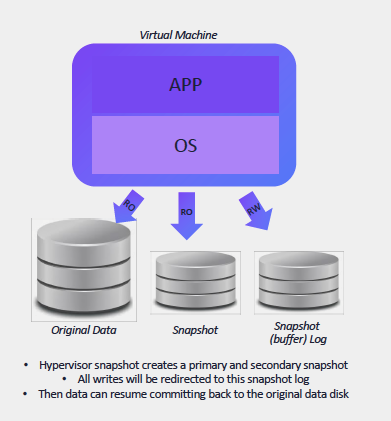Webinar Recap - Four Ways to Maximize your VM Backup to Modernize Your Data Center
At my webinar held on October 30th, I discussed the challenges to modernize your data center.
The webinar is largely based on a previous blog post I wrote outlining the Modernized VM Backups in Today’s Data Center.
As you know, for data protection, protecting virtualized applications is different than protecting the physical counterparts. But when protecting VMs, understanding the shortcomings of hypervisor snapshots is important to understand the impact to your business.
As hyper-converged infrastructure (HCI) continues to gain traction and adoption due to its simplicity, ease-of-use, and elimination of silos in the data center, it becomes important to find ways to overcome any and all shortcomings. In the recent webinar, I introduced a simplified way to protect virtual machines and associated applications leveraging HCI.
The Webinar shared the concepts of protecting different types of hypervisors.
In a poll we held during the webinar, you can see the mix of hypervisors the audience is using in their data centers.

In traditional virtualized protection, virtual machines can become unresponsive while applying the snapshot log during a hypervisor backup.

This was also common pain noted by webinar attendees. As you can see, 63% of the attendees experienced this challenge with traditional backup methods. The use of different hypervisors also leads to a conversation discussing workloads and use cases for HCI deployments.

A Better Way – Embrace Simplicity
By adopting an industry-leading HCI platform like Nutanix, the platform provides a data protection layer.
As explained in the webinar, HYCU complements this by providing an impact-free way to protect VMs and applications by integrating with the data protection layer. This in turn provides:
- Optimal protection of the VMs and applications
- Stun free VM data protection for both ESX and AHV
- An alternative to the traditional VADP hypervisor-level snapshot
Protection with a Purpose
When deploying an HCI platform, applying a purpose-build data protection strategy is the optimal way to leverage the platform and work with associated integrated technologies. The attendees of the webinar agreed. When asked how many backup products were used in their data centers, 47% stated they had two to three products. Why? Data protection provides the optimal recovery for your business to resume operations in the event of an issue or event. Using a heritage product that is not optimized or integrated for your platform will often result in longer backup, recovery and operations for your data center environment.

By leveraging the HCI platform, you are ensuring high availability during backup and recovery to:
- Leverage the data protection layer
- Avoid VM stun related downtime
- Leverage Storage-level snapshots
- Get rapid, infrastructure-free recovery for AHV & ESX leveraging snapshot
These were main factors when we developed HYCU for Nutanix. HYCU for Nutanix is a data protection solution specifically designed to work on Nutanix and leverages Nutanix V3 snapshot API. This is unique to HYCU in how we integrate and implement protection for Nutanix.
Try HYCU for free
Summary
In short, in the Four ways to Maximize Your VM Backup to Modernize Your Data Center webinar, we provided an overview and offered ways to protect VMs and application data, understand limitations of hypervisor snapshots, leverage the hyper-converged platform and snapshots and simplify ways to protect virtualized application. Make sure to check out the webinar replay, and if you have questions you can follow up directly with me at paul.nashawaty@hycu.com or our team at info@hycu.com.





